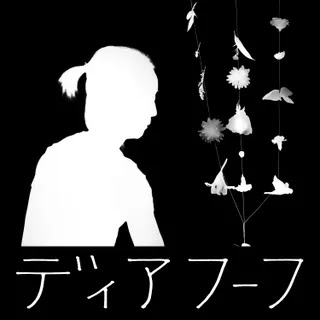Presented as a sprawling three-hour epic, the composer’s drone piece for guitar, cello, and sine wave oscillators seeks new rhythms within the interminable sweep of pandemic time.
Listen closely to the numerous “lockdown albums” released in the past couple of years, and you might hear shared among them the tacit understanding that the cultural reckoning is still unfinished—that anything that attempts to capture what it’s been like to live through this pandemic would be inherently incomplete, and escapism is preferred anyway. The spring of 2020 echoes constantly, but silently.
Does Spring Hide Its Joy, a newly released longform drone piece by electroacoustic composer Kali Malone performed on sine wave oscillators alongside cellist Lucy Railton and Sunn O))) guitarist Stephen O’Malley, was conceived during those haunted months nearly three years ago. Malone didn’t set out to make art that reflects the broader pandemic experience. Instead, she created a musical framework in which to explore the evolving mindspace provoked by its blunted whiplash, giving the listener space to imprint (or release) their own emotions and memories and homing in on the illusory properties of time. “Unmarked by the familiar milestones of life, the days and months dripped by, instinctively blending with no end in sight,” she explains in an accompanying statement. “Playing this music for hours on end was a profound way to digest the countless life transitions and hold time together.” The piece is performed in 60-90 minute instances, but each performance is different, allowing for an ever-shifting relationship to the material and its genesis.
Endurance is a longstanding element of Malone’s music, but Does Spring Hide Its Joy makes it a central component. Each of the three presentations of the piece featured on this release are an hour long (subdivided into 20-minute movements), and, anchored by a shared tonic drone, they easily melt into one sprawling three-hour epic. The music breathes in slow motion, with massive exhalations of bass ceding to stretches of quiet consonance before the next yawning gasp. Change is omnipresent and can be dramatic, but there’s a veneer of stillness that makes listening feel like observing the swirl of a nebula; the spectacle exists on a scale that’s difficult to grasp in one sitting. The most effective way to ground oneself in the piece is to be with the music as it exists in the moment, listening for incremental shifts as they unfold.
What Malone describes as “hold[ing] time together” involves a process of letting go of traditional musical demarcations of time and forming new ones. Drone music is often perceived to lack rhythm, but Does Spring Hide Its Joy is abundant with it, just on different scales than many listeners might be used to. You can mark time with the moments when Railton runs out of bow and changes direction, which don’t occur at regular intervals. The constant ebb and flow of volume, intensity, and dissonance, which takes place in cycles of dozens of minutes, offers another rhythmic viewpoint. But the most fascinating occurs on a much smaller spectrum of time: As the trio builds up microtonal harmonies, warbling beats caused by harmonic interference contract and expand as the frequencies fall in and out of phase with one another. Depending where the listener’s attention rests, clock time, geological time, and quantum time each become observable.
Creating music this precise and harmonically dense requires superhuman concentration, and it’s clear from these recordings how closely the three musicians are listening and reacting to one another. Rather than conjure impressions of solitude, the spontaneous decisions the trio makes—to dig into coarse dissonance, to let the glorious simplicity of an open fifth ring out, to fade into oblivion—speak to the joys of building something collectively. In a recent interview with Bandcamp, Malone discussed how working on a score by Pauline Oliveros, the composer and Deep Listening pioneer whose methods were championed in 2020 as a balm for isolation, has affected how she thinks about working within and composing for an ensemble. Out of the singular nature of sustained tones emerge entire worlds of sound that arise from each member of the trio understanding not only their own role, but how to mold their contributions around the distinct personalities of their collaborators.
There’s something utopian about music driven by an attention to understanding those around you, music that pushes listeners to expand their understanding of how time is experienced and demarcated. In a period of upheaval, letting go of expectations of how things should be, beginning with how music should move or present itself, can be a powerful step toward reimagining the future. Rejecting escapism and celebrating invention, Does Spring Hide Its Joy is equally compelling and uncompromising. The music and the feeling of being absorbed in it is its own reward. Just beneath the surface of Malone’s composition lies an alternate path forward: one that is malleable, defined by change and the mysterious complexities of sound.
















0 comments:
Post a Comment